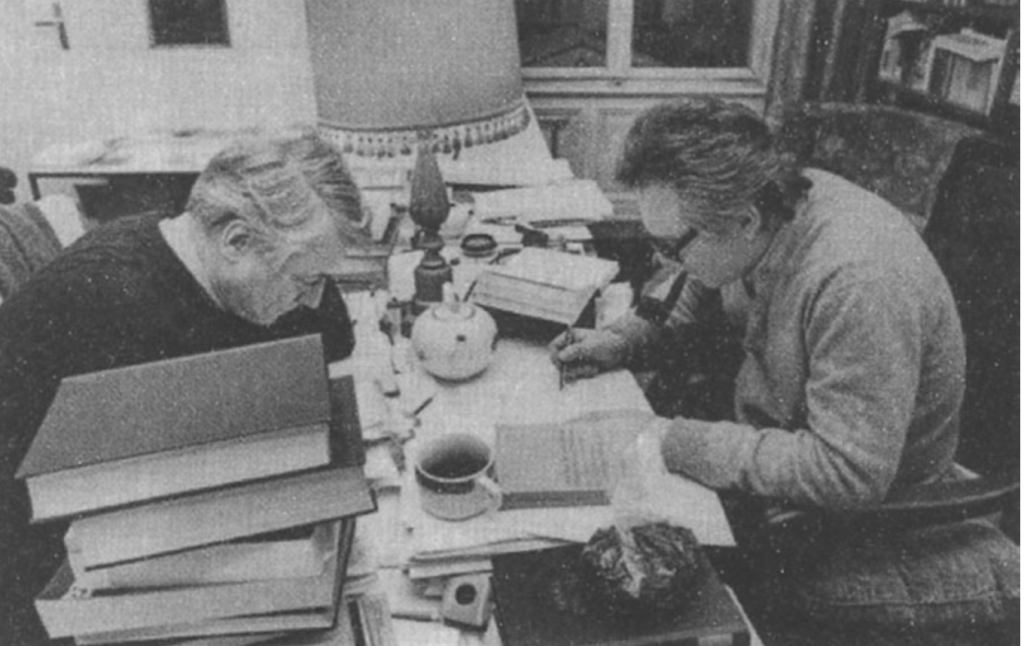In understanding how the mind is represented through art, Freud preferred the metaphor of an abstract impressionistic piece with blotches and non-symmetrical lines. This has to do with the intellectual need to have unity. This is why we read only the whole of what we see, and we miss the small parts. It is what we miss that presents the most meaning. This is also why Animism, for Freud, remains the best example of systematic thinking, where the whole must be perceived in its entirety – in its unity.
Philosophers are the most prone to fall for this jest of a unified whole. Freud says that, “there is an intellectual function in us that demands unity.” Yet this opens up a paradox in so far as Freud rejects rational thinking as a form of thought anathema to this unity-type thinking.
Samuel Weber, in The Legend of Freud, points out how Freud concludes that all rational thought is a substitute for hallucinatory desire. Both have the same goal, the reduction of tension, but both strive towards that goal through an identificatory struggle with an other that is grounded in narcissism.
Key to understanding the idea of narcissism in Freud is how he dealt with anxiety. Anxiety consists of setting the ego apart, which repeats the original trauma in a different form. Anxiety appears as that which the ego seeks to represent but stays in excess. Anxiety makes the trauma a vors-tellung – a re-presentation. It involves a loss of perception, which is a loss of the object. And we know that in castration, the narcissistic ego replaces the id. This is an alterity that the id requires.
Weber points out the connection between narcissism and the repetition of the death drive. This movement of repetition is a narcissistic tendency towards the same. It leads not to an unfathomable abyss of desire, but to a determinate but ambiguous narcissism of the ego that is the very condition of the pleasure principle.
For Deleuze, what is at stake in Freud’s work on the death drive is a matter of philosophical questioning. The binding of repetition to the death drive is a search for a pure transcendental philosophical speculation that precipitates itself into the unfathomable and unfounded according to Deleuze’s reading (The Legend of Freud, 168). Weber disagrees and points to what he refers to as the “silence of the death drive”. The death drive is dependent on another discourse to be heard. Death drive is what goes beyond repetition, and Freud even goes beyond the death drive itself to that of the analytic session. The scene of this repetition is that of transference, where the patient is compelled to repeat the repressed material because he cannot remember it (Freud from Beyond the Pleasure Principle). The patient is compelled to repeat the repressed experience as a present experience. This is also why Freud diverted from Rank’s idea of birth trauma. Freud rejects it in favor of a view that states trauma cannot impact the child because the child lacks sensation. Also significant here is Freud’s discovery of trauma in WW I patients. It was never the scene of war that sparked the trauma, it was always a repressed trauma that may have been sparked by a present and existing trauma, or a present trauma becomes compounded into the repetition of already repeating and already existing traumas.
What is it that stands behind the patients refusal to recognize the trauma? For Freud it is the object that emerges which blocks recognition, and becomes the new object of fascination for the analyst.
Think here of repressed childhood memory and the inability to think it – well what blocks you is your new object of repression.
This is why the blockage, for Freud does not come from the ego, but it comes from the unconscious repressed core of the patients psyche. Nothing is not repressed that is not in some way an object of desire or of pleasure. Weber argues that there is a repetition compulsion that overrides the pleasure principle (Freud, from Beyond pg. 16).
The way out of the repetition compulsion is what Freud would refer to as noncontradiction. The prior goal of the repetition compulsion is death, and once the repressed object is set free, a new search begins, a search that seeks what has been evicted by the pleasure principle from the mind – this is what one can now search and discover through analysis.
Perhaps this is the unity that Freud referred to, not a unity as such, but a desire to integrate a lost unity?



Leave a comment